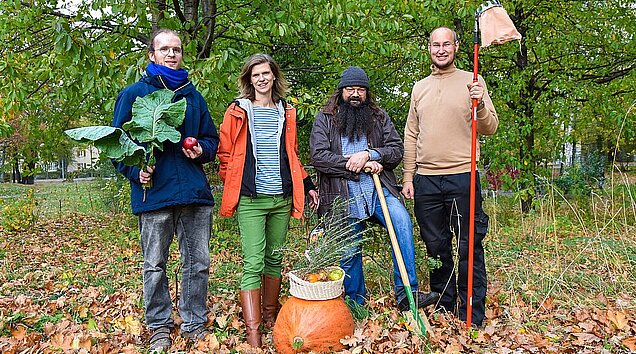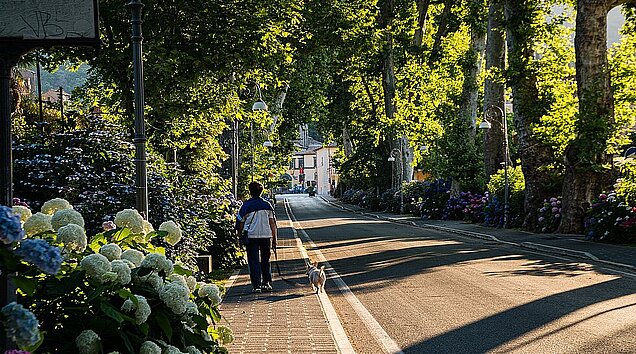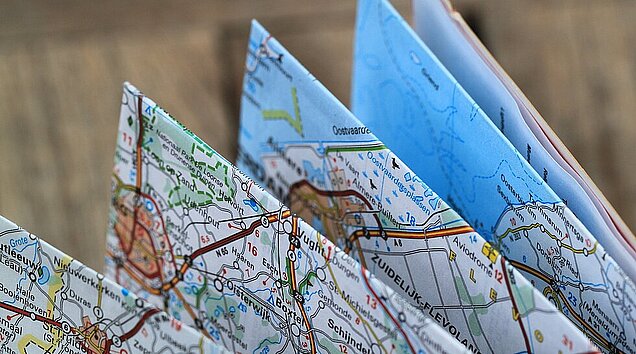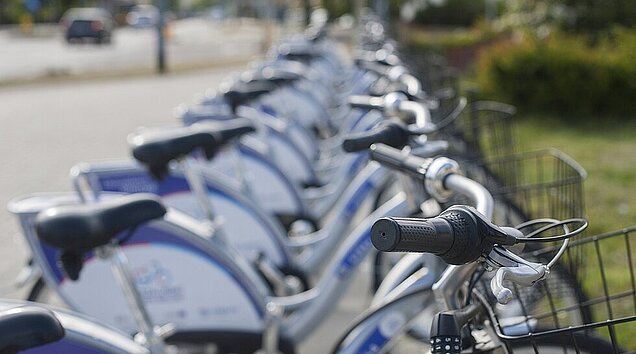
Science Year 2022 - Participate! / Answering your questions
In the Science Year 2022, members of the ScienceCampus devoted themselves to answering the numerous questions submitted. Further information on the Science Year can be found here: Nachgefragt!

WHAT WILL THE CLIMATE-FRIENDLY CITY OF THE FUTURE LOOK LIKE?
The most important thing about the climate-friendly city is that it is just that. Spatially, it can form very different urban spaces: densely or less densely built neighborhoods in combination with large open spaces, such as parks and bodies of water, but also open spaces at the neighborhood level, such as community or individually used gardens.

HOW CAN THE CONCEPT OF A CAR-FREE CITY BE IMPLEMENTED?
In many cities around the world, there are already areas where the ideal of the car-free or low-car city has already been implemented. The aim is to create urban spaces that are not dominated by the car.

HOW WOULD URBAN DEVELOPMENT HAVE TO CHANGE TO REDUCE EDUCATIONAL INEQUALITY?
This is a very important and very relevant question to which, from a research point of view, there is still no conclusive answer. We often talk about 'segregation' when we talk about the social division of society, which is then also expressed spatially in cities, for example, by the fact that there are neighborhoods in which predominantly poor or predominantly rich families live.

HOW CAN THIS BE BETTER TAKEN INTO ACCOUNT IN MOBILITY CONCEPTS AND URBAN PLANNING?
Many cities are working to implement the ideal of the five-minute city. Depending on the size of a city, approaches to a 15-minute city are also currently being pursued, such as in Paris. The idea is that everything you need in your daily life should be within a five- or 15-minute walk from a public transport system stop.

HOW CAN MOBILITY BY BICYCLE BE MADE MORE ATTRACTIVE AND SAFER IN CITY CENTERS?
The more space available to a mode of transport in cities, the more privileged that mode is. Measured in terms of people transported, those moving in cars have proportionally more space available in German inner cities than pedestrians and cyclists. This can be seen as unfair, especially since 'motorised individual transport' contributes to accidents, noise and other emissions in addition to its high consumption of space.

WHEN WILL SCHOOLING BECOME MORE DIGITAL?
In many ways 'digitisation' has already taken place. Almost all classrooms are equipped with a digital projector or a digital whiteboard, in many schools homework is organised via digital platforms, and so on. But the central question is not the amount of digital media available, but which media, how they are used, and by whom, and what impact this has on teaching, learning, school life and the roles of students and teachers.
Click here for all answered questions: Science Year 2022


